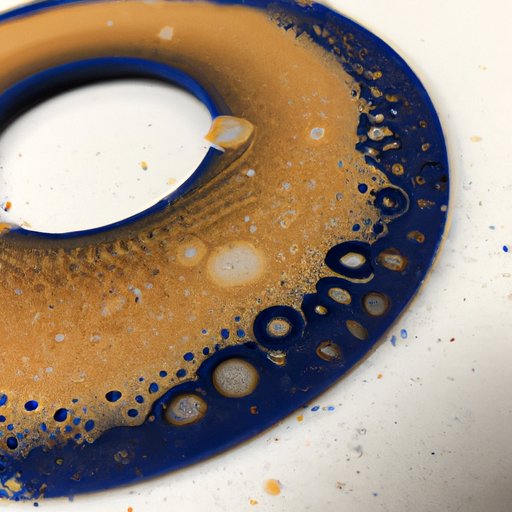
I. Introduction
If you’re a resin 3D printing enthusiast, you might have wondered whether you can sand your resin prints to achieve a flawless finish. Sanding can help smooth out rough surfaces and remove support marks. But, is it safe to sand resin prints? How can you do it without damaging your model?
II. Can You Sand Your Resin Prints? Here’s What You Need to Know
The answer is yes, you can sand your resin prints. Unlike filament 3D prints that have a layered texture, resin prints have a smooth surface that can benefit from sanding. Sanding can also remove support marks that remain after removing the supports.
But, before you take your sandpaper out, you need to consider the type of resin you used. Some resins are easier to sand than others. Low-viscosity resins, which are better suited for printing miniatures, are easier to sand than high-viscosity resins, which are better for printing functional parts.
III. Sanding Resin Prints: Pros and Cons You Need to Consider
One of the most significant benefits of sanding resin prints is achieving a smooth finish. Resin prints often have visible layer lines, and sanding can help alleviate them. Sanding can also remove support marks that remain after removing the supports.
However, sanding resin prints can come with some potential drawbacks. If you’re not careful, you can damage the print. Additionally, sanding can be a time-consuming process.
IV. The Art of Sanding Resin Prints: How to Achieve a Perfect Finish
If you’re ready to sand your resin print, here are some step-by-step instructions to help you achieve a perfect finish:
- Prepare your workspace. Before you begin sanding, make sure you’re working in a clean, dust-free environment.
- Start with a coarse grit sandpaper. Begin sanding with 80-grit sandpaper, gently moving the sandpaper back and forth over the surface. Be careful not to sand too aggressively to avoid damaging the print. Remove the dust with a soft brush or compressed air.
- Move to a finer grit sandpaper. Continue sanding with progressively finer grits of sandpaper (120, 220, 400). Sand each area until you achieve a smooth surface. Remove the dust with a soft brush or compressed air between each step.
- Polish the surface. Once you’ve finished sanding, you can further improve the finish by polishing the surface. Use a polishing compound (e.g., Novus 2) and a microfiber cloth to buff the surface gently.
It’s essential to note that you don’t need to sand the entire surface if you’re only targeting specific areas that require attention. Additionally, you can use a sanding sponge to sand rounded edges and corners carefully.
V. The Ultimate Guide to Sanding Resin Prints: Tips and Techniques
Now that you know how to sand your resin prints let’s look at some additional tips and techniques to refine your results:
- Use a sanding sponge: Sanding sponges are flexible and can conform to the shape of your print. They are ideal for sanding rounded edges and corners.
- Wet sanding: Wet sanding involves using water to lubricate the surface, reducing heat and friction and minimizing the risk of damage to the print.
- Polishing compound: Polishing compounds, such as Novus 2, can help remove scratches and further improve the surface finish of your print.
- Masking tape: Use masking tape to protect areas that don’t require sanding
- Patience: Sanding can be a time-consuming process, especially if you’re working on a large print. Take your time, and don’t rush the process.
It’s also essential to avoid common mistakes when sanding your resin print. For example, don’t apply too much force, choose the right grit of sandpaper, and take breaks to avoid overheating the print.
VI. To Sand or Not to Sand? An Exploration of Resin Print Sanding Methods
If you’re not a fan of sanding or don’t want to risk damaging your print, you can explore alternative methods for achieving a smooth finish on resin prints. Solvent smoothing agents such as MEK or acetone can help smooth out surfaces without the need for sanding.
However, solvent smoothing comes with its drawbacks. It can be challenging to control, and there is a risk of melting or deforming the print. Additionally, the fumes from these chemicals can be harmful, so it’s crucial to work in a well-ventilated area and wear suitable protective equipment.
VII. Conclusion
Sanding resin prints is possible, and it can help you achieve a flawless finish. However, it’s essential to take the necessary precautions to avoid damaging your print. Sanding can be a time-consuming process, but with the right tools and technique, you can achieve excellent results. Alternatively, if you’re not comfortable with sanding, you can explore alternative methods, such as solvent smoothing agents.
Ultimately, the decision to sand or not to sand depends on your preferences and the type of project you’re working on. Whether you choose to sand or try a different method, remember to experiment and have fun with your resin 3D printing projects.




